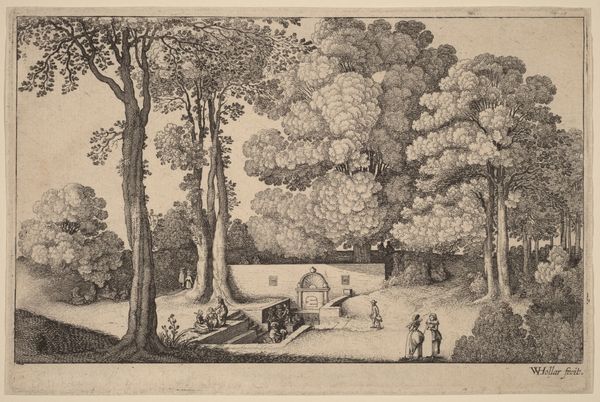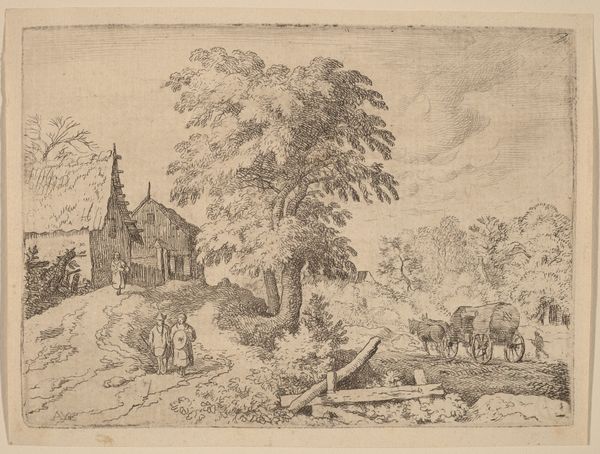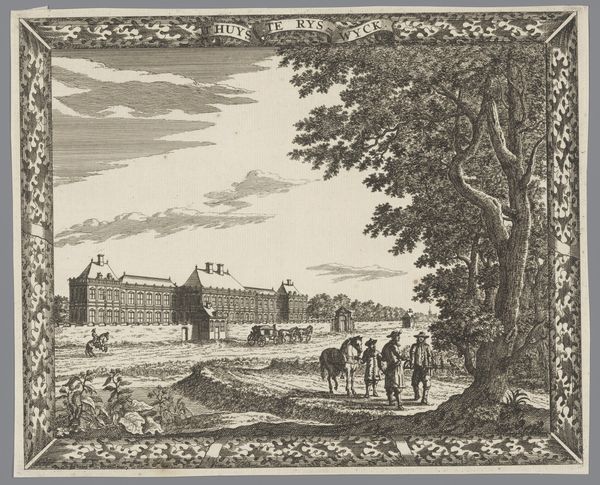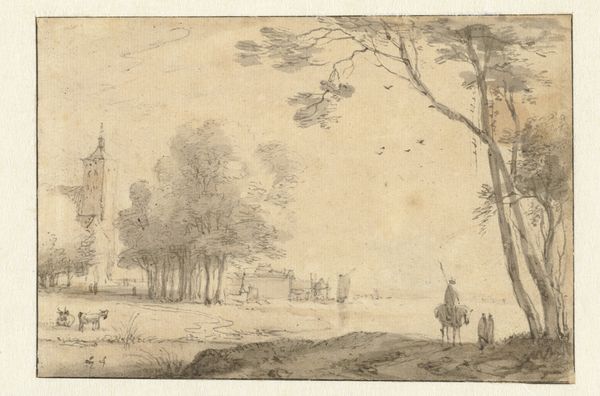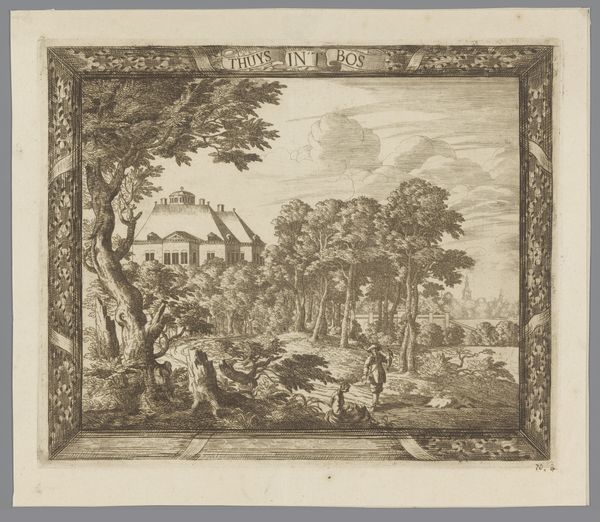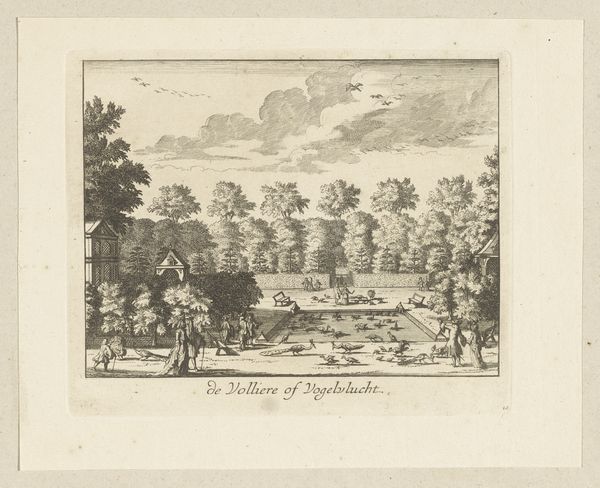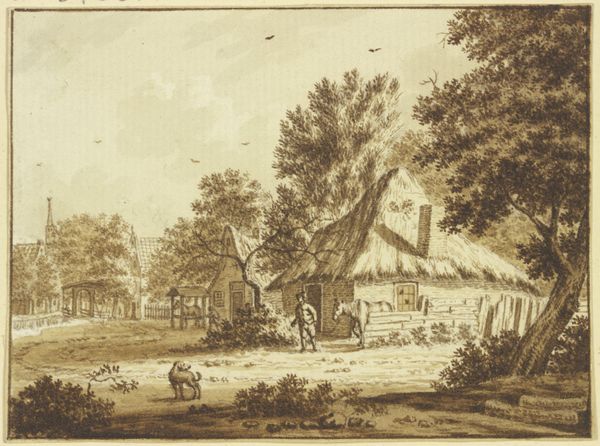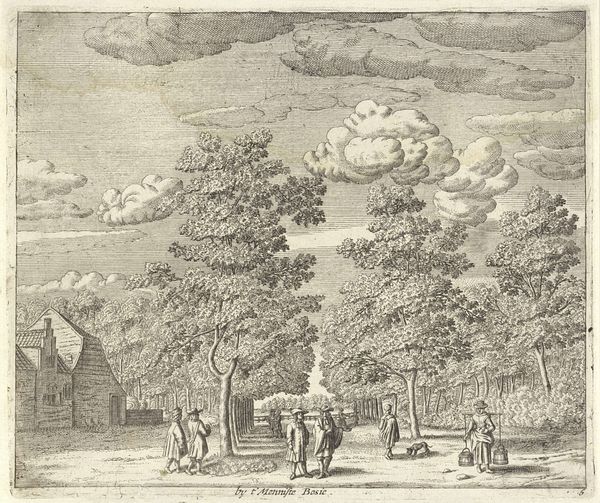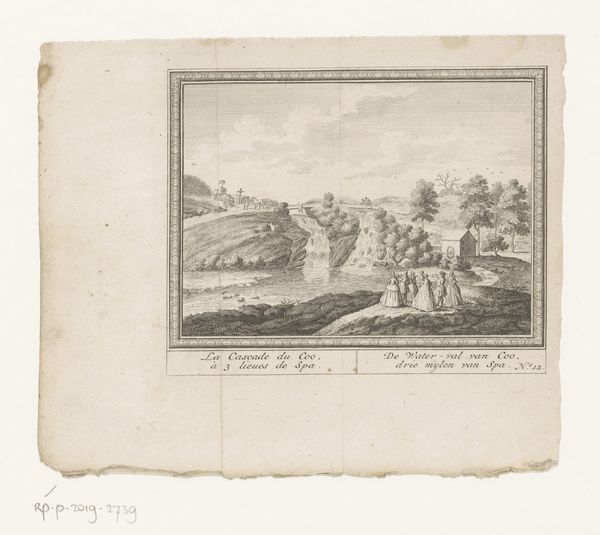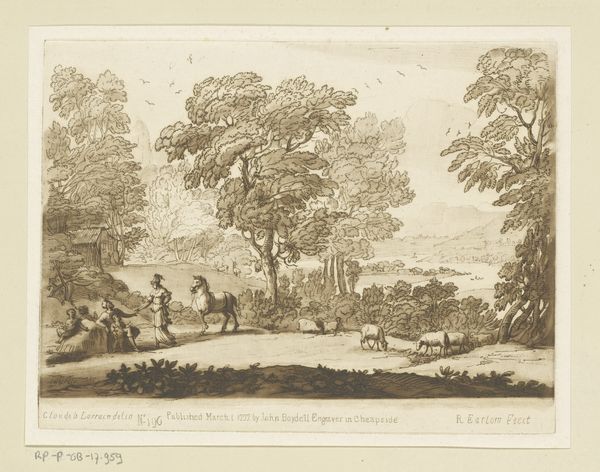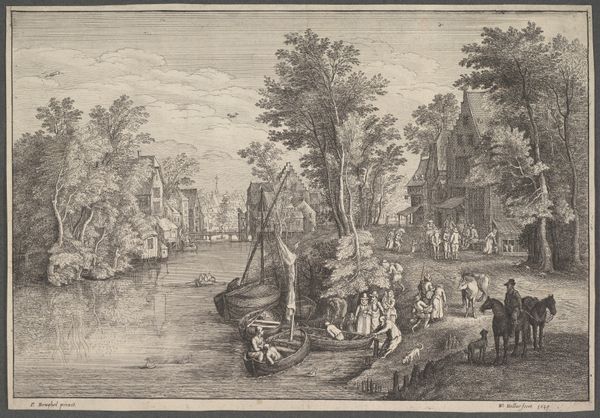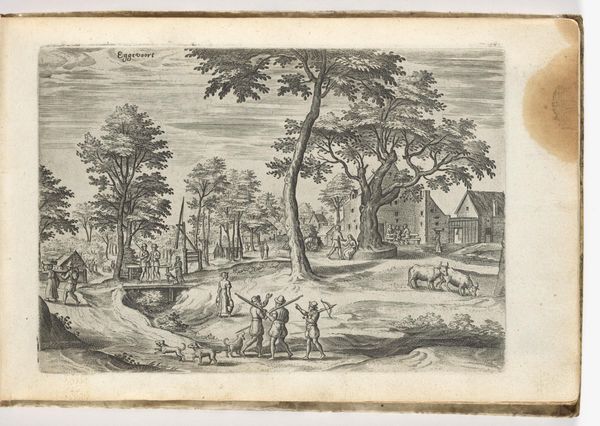
print, engraving
#
baroque
#
dutch-golden-age
# print
#
landscape
#
line
#
cityscape
#
engraving
Dimensions: height 231 mm, width 285 mm
Copyright: Rijks Museum: Open Domain
Editor: So, this is "View of Ter Noot Castle in The Hague," a print dating from between 1681 and 1728, by Cornelis Elandts. The fine lines create a sense of a tranquil, almost idyllic scene. What do you see in this piece? Curator: Beyond the picturesque scene, consider the symbolic weight of "home," specifically, the "huis" within "Het Huys ter Noot". The image carries connotations of refuge, lineage, and societal standing. The Baroque era was very preoccupied with ideas about power and authority, so it's important to see how the artist uses emblems of status. Editor: Status, like the carriage prominently displayed? Curator: Precisely. And note the meticulous detail. Every figure is rendered with specific purpose and placed carefully along a shared route that leads to this Huis, imbuing it with meaning. These are all figures with power, coming or going. Think of it not just as a place but as an entity. Do you see a parallel between this dwelling and, say, a powerful family? Editor: Absolutely! The house as a stand-in for a family, a lineage. It makes you think about their identity. It's a very deliberate projection. Curator: Indeed. The house becomes a stage for presenting power and prestige, framed, quite literally, within the borders of the engraving. What is more interesting, in your opinion, the path, or the castle? Editor: That is a great question. I assumed it was the house, but now I am more uncertain. Thank you!
Comments
No comments
Be the first to comment and join the conversation on the ultimate creative platform.
